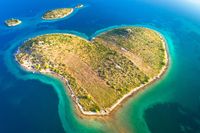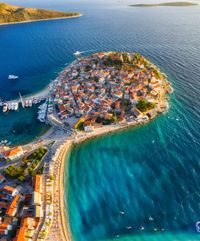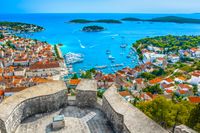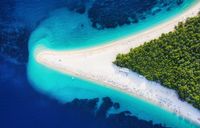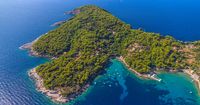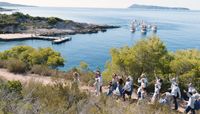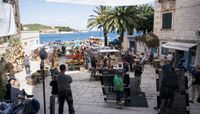ISLANDS
HOME - DISCOVER CROATIA - ISLANDS
Croatia has an incredicle number of islands, as many as 1185 to be exact, in addition to numerous cliffs and reefs.
The Croatian islands are the second largest archipelago in the Mediterranean.
67 of these islands are inhabited, the largest of which are Krk and Cres in the north and the central islands of Brac and Hvar.
Each island has its own its own story to tell, with unique sights, history and customs.
Hvar
Hvar has the reputation of being the sunniest part of Croatia. The island enjoys on average 2726 hours of sunshine annually, which is almost 200 more hours per year than the general average, which makes the island a popular destination. Hvar is trendy, vibrant and loved by royalty, jet setters and many celebrities. Despite this luxurious status, Hvar is also a popular holiday destination for those looking for an affordable or quiet holiday. Hvar is also called the Saint-Tropez of Croatia.
Hvar is very versatile destination. It is famous for its great nightlife, especially the popular after beach parties, which may make it sound like a busy port. But that’s the beauty of a Croatian cruise; many people choose to stay on the water and travel by boat to one of the many secluded bays where you can enjoy the beautiful surroundings undisturbed.
In terms of culture and history, there is also plenty to discover and see. Within the old city walls dating back seven centuries, you will find St. Stephen’s Cathedral, picturesque town squares, palaces, and the oldest theatre in Europe.
In the city of Hvar history abounds; the monuments are literally next to each other, inside each other and on top of each other, making Hvar an ideal destination for culture lovers. And if all that isn't enough, there's also an abundance of museums and art galleries.
Brac
This island is the third largest island in the Adriatic Sea, with an area of 395 km². The coastline boasts a length of 175 km, and offer a variety inlets featuring small secluded beaches.
The most famous and popular beach on Brac the Golden Horn, often featured on lists of the most beautiful beaches in Europe. What makes this beach so unique if the way in which the winds are constantly changing its shape, so it never looks the same.
Well worth a visit!
The base layer of the island is limestone, which is still mined to this day. This type of stone is used all over the world and Brac limestone has been used in the construction of buildings as iconic as the White House in Washington DC.
Brač has a rich history with a Roman Catholic background, evidenced by the multitude of chapels located throughout the island.
Elafiti Islands
The Elafiti Islands are a group of thirteen islands northwest of Dubrovnik. The island of Koločep is closest of these islands to the city, about 5 km off the coast. Together these islands have an area of about 30 km², with some of the islands still uninhabited, and all are car-free.
About 800 people live scattered across the islands On the island of Lopud you have the option to rent a bike and explore its many sights. There are relics from the Roman empire, beautiful old villas, and stunning churches interspersed within the breathtaking scenery of Lopud.
You can also relax on a sunny cafe terrace or score a souvenir in one of the shops. Many people visit these islands in combination with a visit to the city of Dubrovnik.
Korčula
Korčula Though not proven, Korcula is known as the birthplace of the famous explorer Marco Polo; Korčula belonged to the city of Venice at that time, another of his possible birthplaces.
One of the arguments that favors Korcula, is the fact that to this day, many of the inhabitants living on this island have the surname Polo. The city features a museum in tribute to the world traveler.
Korčula is a popular island destination for tourists due to its natural beauty, featuring both beautiful beaches and dense forestation. Delicious white wines are locally produced on the island as well from the pošip and grk grapes. Grk grapes can only be found in the vineyards of Lumbarda on Korčula, which makes the Grk wine truly unique.
Vis
The island Vis is a hidden paradise. Mass tourism has not yet reached the island, although it has gained popularity since release of Mamma Mia 2: Here we go again. Filming for the movie took place on the island for 24 days.
Vis features stunning nature and beautiful hidden beaches.
Stiniva beach is one such hidden gem and can only be reached by boat. Nestled between two cliffs, the unique atmosphere of this beach is indescribable.
The island of Vis also produces its own wine, called Vugava. It is
an ancient variety, likely more than 2000 years old. It is also said to be a related descendant of the Viognier, but this has not been proven. The grape requires a lot of attention and needs to be harvested at the right time to achieve its fullest potential.
